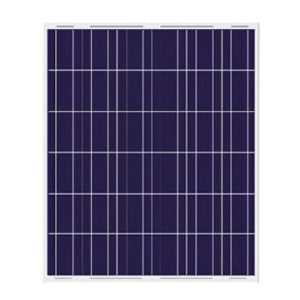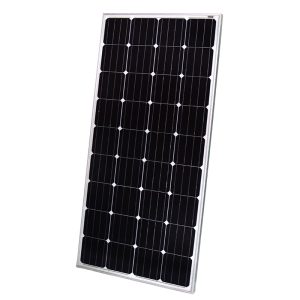As the demand for renewable energy sources continues to rise, solar power has emerged as a leading solution for residential, commercial, and utility-scale applications. Among the various solar panel options available, the 230 watt solar panel has become a popular choice due to its balance of power output, efficiency, and affordability. In this article, we’ll delve into the dimensions, construction, performance specifications, certifications, applications, and installation considerations for 230 watt solar panels, providing you with a comprehensive understanding of this widely-used photovoltaic (PV) module.
Panel Dimensions
Standard Sizes
Most 230 watt solar panels have dimensions around 64.5″ x 38.7″ x 1.57″ (1650 x 992 x 35mm). This standard size strikes a balance between power output and ease of installation, making it suitable for a wide range of residential and commercial applications. The typical weight of a 230 watt panel ranges from 41 lbs (18.6 kg) to 44.1 lbs (20 kg), which is manageable for most mounting systems.
Variations
While the above dimensions are common, some manufacturers may offer slightly different sizes to cater to specific project requirements or design preferences. For instance, models like the 64.95″ x 39.05″ x 1.37″ (1632 x 995 x 50mm) or the more compact 60″ x 31″ x 1.2″ are also available. It’s essential to consult the manufacturer’s specifications and consider factors like available roof space, racking system compatibility, and local building codes when selecting the appropriate panel size.
Panel Construction
The construction of a 230 watt solar panel is designed to ensure durability, efficiency, and long-term performance. Here are the key components:
Frame
Most 230 watt panels feature an anodized aluminum alloy frame that provides structural rigidity and corrosion resistance. This sturdy frame not only protects the solar cells but also facilitates secure mounting on various racking systems.
Glass
To protect the solar cells from environmental factors, a layer of high-transparency tempered glass, typically 3.2mm (0.13 inches) thick, is used. This glass is designed to withstand impact, extreme temperatures, and harsh weather conditions, ensuring the panel’s longevity and performance.
Solar Cells
At the heart of a 230 watt solar panel are 60 multicrystalline or monocrystalline solar cells arranged in a 6×10 configuration. These cells, with typical dimensions of 156 x 156mm (6 inches), are responsible for converting sunlight into electrical energy through the photovoltaic effect.
Junction Box and Cables
To facilitate electrical connections, 230 watt panels are equipped with an IP65-rated junction box, which protects against environmental factors like dust and water. The panels also feature photovoltaic cables (4.0mm²) and MC4 connectors, ensuring reliable and secure wiring for both series and parallel connections.
Performance Specifications
When evaluating solar panels, it’s crucial to consider their performance specifications to ensure they meet your energy needs. Here are the key performance metrics for a typical 230 watt solar panel:
- Maximum power output: 230 watts (±3% tolerance)
- PTC rating: 208.9 watts (PTC, or PVUSA Test Conditions, is a more realistic measure of a panel’s performance in real-world conditions)
- Maximum power voltage: 29.8V
- Maximum power current: 7.78A
- Open-circuit voltage: 37.0V
- Short-circuit current: 8.26A
- Module efficiency: 14.1%
These specifications provide valuable insights into the panel’s energy production capabilities, voltage and current characteristics, and overall efficiency. It’s essential to consider these factors when designing a solar system to ensure optimal performance and compatibility with other components, such as inverters and charge controllers.
Certifications and Warranties
Reputable solar panel manufacturers adhere to stringent quality standards and certifications to ensure the safety, reliability, and performance of their products. When it comes to 230 watt solar panels, you can expect the following certifications and warranties:
- Certifications: Panels are typically certified for salt mist resistance, ammonia resistance, and anti-reflection surface treatment, ensuring their durability in various environmental conditions.
- Warranties: Manufacturers typically offer a 10-year product warranty covering materials and workmanship, as well as a 25-year linear power output warranty. The latter guarantees a specific level of power output over the panel’s lifespan, providing assurance of long-term performance.
These certifications and warranties not only demonstrate the manufacturer’s confidence in their products but also provide peace of mind for consumers, ensuring their investment is protected.
Applications
The versatility of 230 watt solar panels makes them suitable for a wide range of applications, both on-grid and off-grid:
- Residential solar systems: These panels are commonly used in residential rooftop installations, providing homeowners with a reliable source of clean energy and potential cost savings on electricity bills.
- Commercial and industrial solar systems: With their balance of power output and affordability, 230 watt panels are often employed in commercial and industrial solar projects, contributing to the overall energy mix and sustainability goals of businesses.
- Utility-scale solar farms: While larger, higher-wattage panels are typically used in utility-scale solar farms, 230 watt panels can still play a role in these large-scale installations, particularly in areas with space constraints or specific project requirements.
- Off-grid and remote applications: The portability and efficiency of 230 watt panels make them well-suited for off-grid applications, such as powering remote cabins, RVs, or telecommunication systems in areas without access to the grid.
Additionally, used panels with minor cosmetic blemishes (snail trails) can be repurposed for off-grid applications, extending their lifespan and contributing to a more sustainable and circular economy.
Installation Considerations
Proper installation is crucial for ensuring the optimal performance and longevity of a solar panel system. When working with 230 watt solar panels, consider the following installation best practices:
- Snow and wind load ratings: These ratings vary by manufacturer but are typically 5400Pa for snow load and 2400Pa for wind load. Ensure your mounting system and roof structure can accommodate these loads to prevent damage or system failure.
- Mounting and racking systems: Selecting the appropriate mounting and racking systems is essential for optimal panel positioning, structural integrity, and ease of installation and maintenance. Consult with professionals or follow manufacturer guidelines to ensure a secure and code-compliant installation.
- Electrical connections: Proper wiring, grounding, and electrical connections are critical for safe and efficient system operation. Follow local electrical codes and manufacturer instructions to ensure compliance and avoid potential hazards.
- Shading analysis: Conduct a thorough shading analysis to identify potential obstructions that could reduce the system’s energy output. Adjust panel placement or consider trimming trees or relocating obstructions to maximize sunlight exposure.
- Maintenance and monitoring: Regular maintenance, such as cleaning the panels and inspecting electrical connections, can help maintain optimal performance over the system’s lifespan. Additionally, consider implementing monitoring systems to track energy production and identify potential issues promptly.
By adhering to these installation considerations, you can ensure the safe, efficient, and long-lasting operation of your 230 watt solar panel system, maximizing your return on investment and contributing to a more sustainable future.
Conclusion
In the ever-evolving landscape of solar energy, the 230 watt solar panel has emerged as a versatile and reliable choice for a wide range of applications. With its balanced power output, efficient design, and industry-standard certifications, this panel offers a compelling solution for residential, commercial, and off-grid projects.
By understanding the dimensions, construction, performance specifications, certifications, applications, and installation considerations, you can make an informed decision when selecting and implementing 230 watt solar panels. Whether you’re a homeowner seeking to reduce your carbon footprint and energy costs, a business striving for sustainability, or an off-grid enthusiast, these panels provide a reliable and cost-effective path to harnessing the power of the sun.
As the demand for renewable energy continues to grow, investing in high-quality solar panel systems like the 230 watt option is not only an environmentally responsible choice but also a smart investment in a cleaner, more sustainable future. With the right knowledge and professional guidance, you can unlock the full potential of solar energy and contribute to a greener tomorrow.
For more information on solar panels, foldable solar panels, and other solar components, visit Solar Exporters, a professional solar module manufacturer with over 12 years of experience in production and quality control. Contact us at [email protected] or +86 15678870014 for expert guidance and customized solutions tailored to your solar energy needs.



